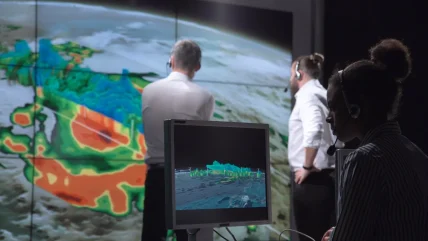
IBM has unveiled a new artificial intelligence (AI) foundation model designed to tackle a range of weather and climate challenges. Developed in partnership with NASA and with contributions from US-based Oak Ridge National Laboratory, the model is currently available in open-source format on Hugging Face.
IBM has designed the weather and climate model to power both short-term weather forecasting and long-term climate projections. It joins the Prithvi family of AI foundation models, which includes the Prithvi geospatial AI foundation model, launched last year as an open-source geospatial AI model.
According to IBM, the design and training methodology of the new weather and climate model enables it to handle a wider array of applications than current weather-focused AI models.
The model’s potential applications include generating targeted forecasts based on local data. It can also spot and predict harsh weather patterns. These capabilities are expected to enhance the spatial resolution of global climate simulations and refine the representation of physical processes in numerical weather and climate models.
Weather and climate model harnesses four decades of mapping data
IBM claims that the foundation model has been pre-trained using 40 years of Earth observation data sourced from NASA’s Modern-Era Retrospective Analysis for Research and Applications, Version 2 (MERRA-2). The model’s architecture allows for fine-tuning across various scales, global, regional, and local. This makes it particularly suitable for a wide range of weather-related research.
“Advancing NASA’s Earth science for the benefit of humanity means delivering actionable science in ways that are useful to people, organisations, and communities,” NASA’s Science Mission Directorate Earth Science division director Karen St. Germain said. “The rapid changes we’re witnessing on our home planet demand this strategy to meet the urgency of the moment.
“The NASA foundation model will help us produce a tool that people can use: weather, seasonal, and climate projections to help inform decisions on how to prepare, respond, and mitigate.”
The foundation model is accompanied by two fine-tuned versions specifically tailored to address key scientific and industry-related applications. The first of these applications involves climate and weather data downscaling. The model can deliver both weather and climate data at resolutions up to 12 times greater than typical outputs, facilitating localised forecasts and climate projections, as per IBM.
The second application centres on gravity wave parameterisation. The foundation model aims to enhance the estimation of gravity wave generation, thus improving the accuracy of numerical weather and climate models and reducing uncertainty in future climate and weather event simulations. This gravity wave parameterisation model is part of the NASA-IBM Prithvi family of models on Hugging Face.
“This space has seen the emergence of large AI models that focus on a fixed dataset and single use case — primarily forecasting,” said IBM Research Europe’s director and IBM accelerated discovery climate and sustainability lead, Juan Bernabe-Moreno. “We have designed our weather and climate foundation model to go beyond such limitations so that it can be tuned to a variety of inputs and uses.
“For example, the model can run both on the entire earth as well as in a local context. With such flexibility on the technology side, this model is well-suited to help us understand meteorological phenomena such as hurricanes or atmospheric rivers, reason about future potential climate risks by increasing the resolution of climate models, and finally inform our understanding of imminent severe weather events.”
IBM is also working with Environment and Climate Change Canada to further explore the model’s flexibility in additional weather forecasting scenarios. This partnership involves investigating very short-term precipitation forecasts through a technique known as precipitation nowcasting, which integrates real-time radar data. The team is also examining downscaling methods that translate global model forecasts to a finer scale.
Recently, Nvidia Research launched a new generative AI model called StormCast, built to emulate high-fidelity atmospheric dynamics. StormCast is claimed to enhance weather prediction at the mesoscale, a scale larger than storms but smaller than cyclones, which is essential for disaster planning and mitigation.






